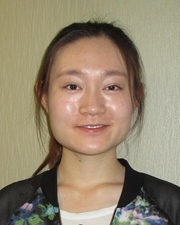Association between Genetic Variants in ARMS2 and the Risk of Age-related Macular Degeneration

University of Wisconsin
Green Bay
Ran Zhao¹, Scott J Hebbring¹, Zhan (Harold) Ye²
¹Center for Human Genetics, ²Biomedical Informatics Research Center
Research area: Genetics
Background: Age-related Macular Degeneration (AMD) is the leading cause of blindness in adults. It is well known that AMD is associated with multiple genetic markers in multiple genes on chromosome 10, including a common nonsynonymous single nucleotide polymorphism (SNP) (rs10490924) in ARMS2. However, the causative SNP for AMD in this region is difficult to identify because of extensive linkage disequilibrium. A nonsense SNP (rs2736911) in ARMS2 has been identified and may be hypothesized to reduce ARMS2 function. To determine if variants in ARMS2 may predict AMD, we genotyped these two coding variants in AMD cases and controls.
Method: We genotyped 865 cases and 1496 controls in a subset of patients within the Personalized Medicine Research Project using an allele specific PCR. Two fluorescently labeled and two unlabeled primers of different lengths were used to amplify alleles corresponding to either the wild-type or the variant allele for both coding SNPs in ARMS2. The frequency of each haplotype and diplotype were compared; p-values were obtained from a chi-square test.
Results: The frequency of SNP rs10490924 was enriched in cases compared to controls as expected (OR=1.5; 95% CI: 1.3, 1.7; p <0.001); individuals who were compound heterozygous for both coding SNPs had a similar OR compared to individuals who were homozygous for SNP rs10490924, suggesting SNP rs2736911 may modify the apparent association of SNP rs10490924.
Conclusion: This study is consistent with previous studies in that SNP rs10490924 was associated with AMD. Furthermore, SNP rs2736911 may modify the effect of SNP rs10490924, which suggests that SNP rs10490924 may be the causative SNP for AMD. However, further studies are still needed in order to identify the functional relationship between ARMS2 and AMD.
